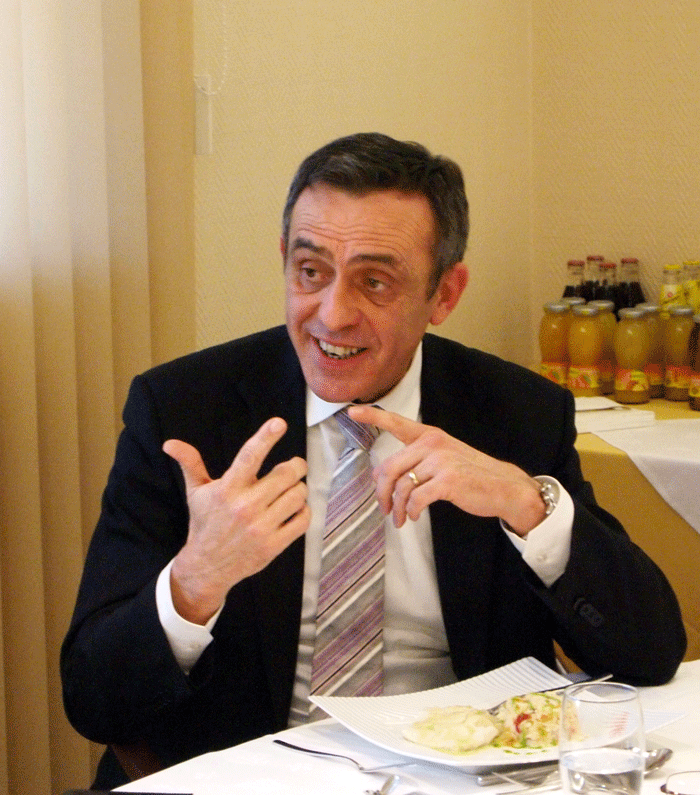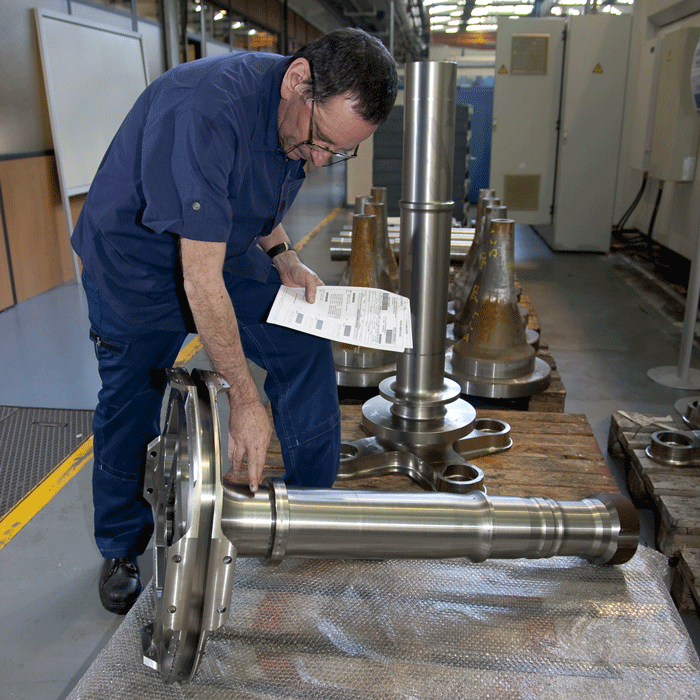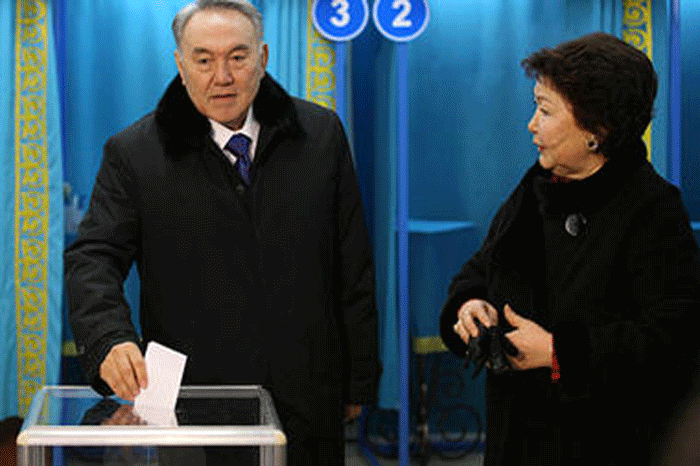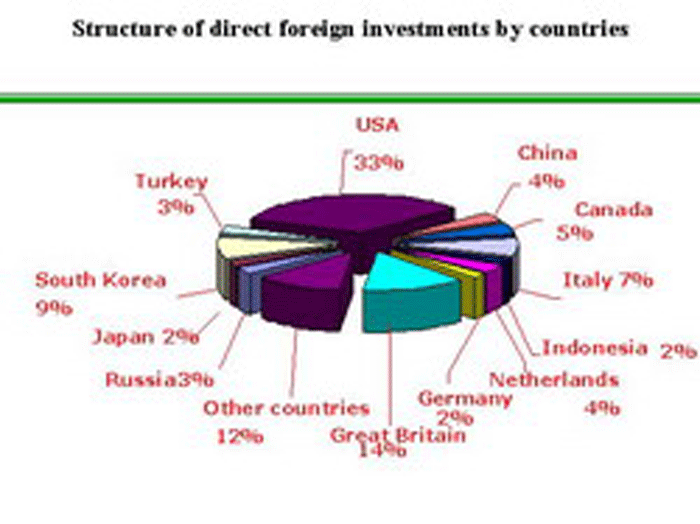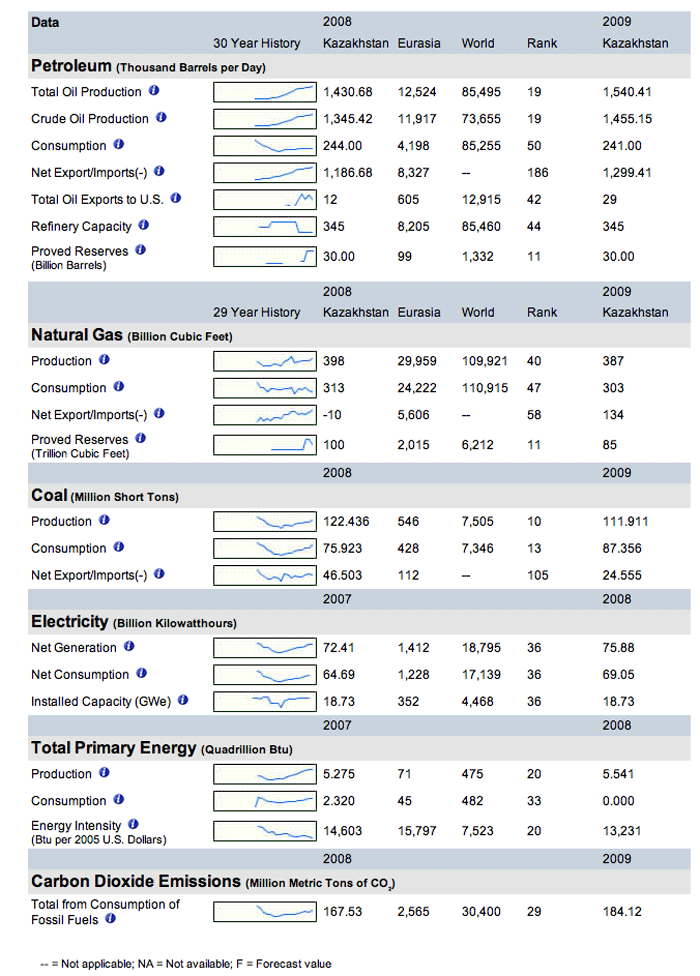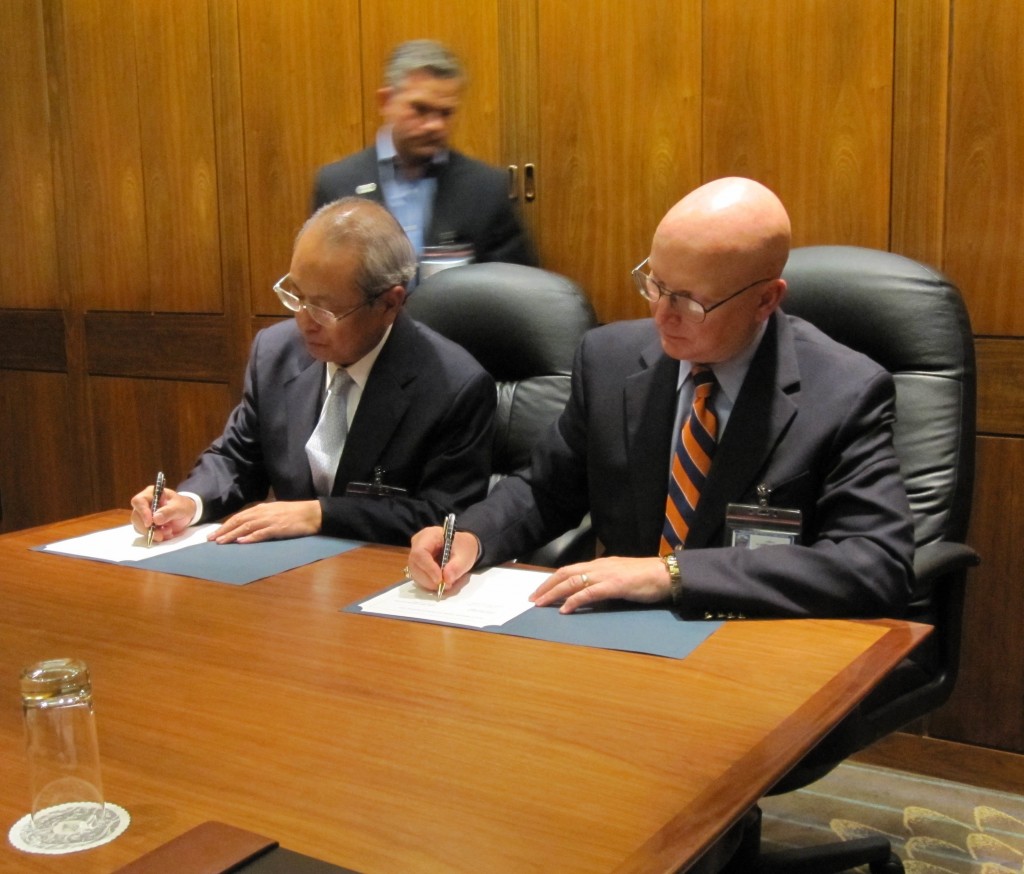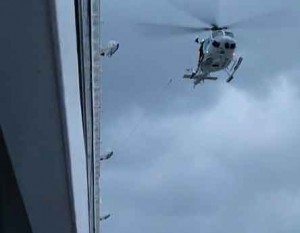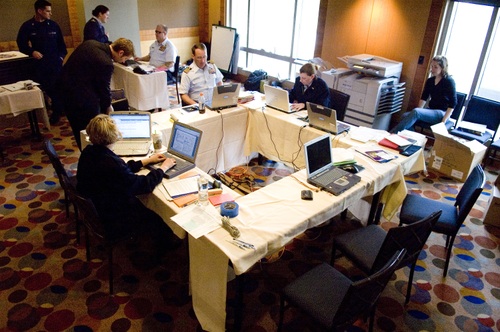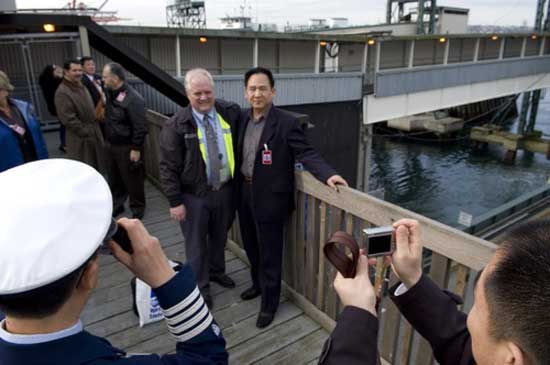Shaping a Cultural Shift From the “Legacy” Mindset
04/12/2011 – Recently, Second Line of Defense talked with Lieutenant-General Dave Deptula (Retired) about the opportunity to leverage new Vth generation aircraft to gain dramatic increases in capability and enhanced savings by retiring several specialized ISR assets. Based on such a shift, a cultural change could be implemented that re-looked at the entire ISR enterprise. And such an approach should shape how the next generation bomber is thought of and designed.
[slidepress gallery=’deptula-interview’]
SLD: We’ve got a decade ahead where we can shape the transition, if we’re really focused on it. A decade from now, we get all the F-22s and F-35s working together, and shaping next generation weapons and Remotely Piloted Vehicles. We can get there, but we have to invest smartly.
General Deptula: In the context of being able to manage this transition, one has to change the basis of how warfare is conducted and how we value the systems we buy. We don’t want to keep investing in the past. We need to shift what we use as a measure of merit for systems acquisition.
One of the reasons the F-22 was terminated, and why folks are now going after the F-35, is that a predominate measure of “merit” is individual unit cost to a degree greater than the spectrum of capabilities that these aircraft provide. If you look at where technology is allowing us to go with putting panoply of different capabilities on one aircraft, one begins to see that individual unit cost, while one measure of merit, pales in comparison to the value that you get in investing in these 5th generation systems. With multi-mission capabilities on a single aircraft that can penetrate contested airspace and accomplish solely by themselves what it would take many conventional aircraft to achieve the same effect — if they could even do it at all — you achieve much greater cost-effectiveness than by any other means.
For both the F-22 and F-35, the perceptions of what they are capable of accomplishing have been distorted by what we call them. We still use nomenclature that’s left over from the last century to describe our aircraft. We call these aircraft “fighters,” when in fact they perform much more than what is nominally accomplished on a traditional “fighter” mission. The termination of the F-22 buy at less than half its military force requirement was driven primarily because it was wrongly perceived by the senior-most leadership in the Department of Defense as a “niche” airplane.
It was not recognized that what these aircraft allow us to do is to penetrate denied airspace, collect data that cannot be acquired in any other way, translate that data into decision quality information, and then act upon that information by applying either kinetic or non-kinetic effects. To be able to do that using the notion of force packaging would cost much, much more and would involve many more legacy aircraft — if they could even achieve the same effects. So F-22s and F-35s are economically very cost-effective relative to alternatives if you evaluate their capability in the context of extracting information and using it to achieve a decision advantage. We need to move beyond using traditional concepts of operation for 5th generation aircraft that are well beyond simply an evolution of the last generation of “fighters.”
The challenge is getting a very conservative institution like the Department of Defense to understand and embrace the transformational nature of these systems. They provide the capability to put together a concept of operations where you distribute these systems and the information that they provide in a honeycomb-like architecture to achieve effects well beyond what is possible with legacy aerospace systems.Today our forces packages rely on critical nodes, any one of which if acted upon by an adversary, could collapse the effectiveness of the entire structure.
A distributed aerospace architecture enables execution of an operational plan in a way that it can’t be impeded by any few nodes being acted upon. It’s a different way of thinking about how to conduct warfare and may enable us to achieve advantages so significant that they provide a conventional deterrent stronger than anything we have possessed in the past.
SLD: The approach you’re describing is asymmetrical aimed at defeating a state adversary who would be looking at the old linear operation, and secondly, by being distributed, it actually allows you to deal with one of our greatest concerns, which is the capacity of non-state actors to be disperse. So ironically, it’s better for dealing with non-state-to-state environments as well as traditional state actors. It’s better for dealing with a more fluid, COIN kind of environment as well.
General Deptula: Absolutely. The way we’re achieving desired effects on the east side of the AFPAK border — from what I read in the Washington Post and New York Times — is very effective. It is effective because this particular type of adversary that we’re going against has no way of impeding the combination of knowledge and force application that is being applied against them. I think that defines the term “asymmetric.” It is getting rather boring hearing pundits talk about how our adversaries are the ones that are fighting asymmetric war and have an asymmetric advantage — we have them too, and we’re using them to great benefit. Isn’t it interesting that we’re achieving our greatest degree of success against Al Qaeda by capitalizing on a kind of ISR-strike complex where we have a significant advantage over non-state actors? We need to replicate that capability across our entire force.
The current focus on achieving “savings” by slashing funding for what “conventional wisdom” views as secondary systems that are enabling to distributed operations — critical components like data links on F-22s — or pushing them so far out into the modernization cycle that, for all intents and purposes you’re not going to fund them, neuters a capability that may give us a dislocating advantage.Having all of your players connected via a secure jam resistant low probability of intercept data link is key to countering the challenges of adversary electronic combat and identification. Today operators still spend a significant amount of their communications time and brain cells building situation awareness.
Additionally, we take for granted that we are going to be able to operate in a permissive “comm jam” free environment. HAVE QUICK II and secure are ok, but anyone who has ever flown in a Red Flag knows they don’t work for long periods of time. The technology is 30 years old, and it simply just can’t keep up. We need more focus today on the criticality of getting a modern highly integrated capable data link system for all of our aircraft. We have a long way to go in educating decision makers that they have to shift the paradigm that they have become accustomed to understanding the American way of war, and leverage the capabilities inherent in 5th generation aircraft.
SLD: I think it’s a cultural shift more than a paradigm shift because basically many folks keep the ’91 scenario in their mind as how you use air power. Even though as you pointed out, we’ve actually shifted the approach, certainly with UAVs, but we’ve not accepted that the Predator revolution is exponentially implemented by F-22s and F35s, if we empower the proper concepts.
You were talking about individual unit cost as the way by which people destroy the capability to fund the fleet that makes any sense, but the real point is there’s no fleet concept. If I take a fleet concept that says these F-22s and F-35s allow me to do a very different kind of operation, get rid of a lot of assets, get better logistic savings, but if you don’t take a fleet approach, you’re never going to get there. And if you don’t take a fleet approach that says this is not 1991, that the only way I use these things would be 1991. Well 1991 isn’t around anymore.
General Deptula: There is a tendency to segregate ISR in the old culture of using specialized platforms. We can no longer afford to solely rely on specialized aircraft that are very vulnerable in a modern air environment. We can leverage fifth generation aircraft to evolve beyond specialized aircraft that are expensive to maintain and represent the past not the future in accomplishing ISR. We need to embrace concepts to exploit that advantage. We need to look at designing command and control architectures and institutions to become much, much more survivable. If we can’t achieve the cultural shift required to optimize these multi-mode-nodal assets for conducting strike and ISR, and if the military continues to use traditional serial approaches for battle management we will waste money and become more and more vulnerable.
SLD: The other part of this is people have completely forgotten the stealth enterprise and then you hear the notion that “well stealth won’t last forever,” but none of us are arguing that. We’re arguing this can work for 10 to 15 years for sure, and even then; there are other ways to deal with degradation of stealth. The point is that the legacy aircraft have no real stealth.
General Deptula: Stealth or low observability won’t last forever? So what does that mean? That we shouldn’t build low observable aircraft? That we should go back and buy additional 4th gen aircraft of 40 year old design because their unit costs are less than 5th gen aircraft? That’s seeking false economy because those aircraft are not survivable in advanced integrated air defense environments. Stealth isn’t just about preventing early detection — every piece of the kill chain is degraded by low observability.
Furthermore “stealth” is not a product — it is a characteristic. Far from being subject to fading away as a characteristic, if one takes into consideration the fact that 90 percent of what will be known in 50 years has yet to be discovered, low observable characteristics will most likely grow in capacity and capability, not decrease. So why wouldn’t we continue to capitalize on the advantages of reducing signature in all appropriate areas of the frequency spectrum? Doing so will continue to yield advantages for us relative to increasingly capable adversary air defense systems. The notion of limiting investment in stealth is representative of old think from the last century, and a culture that embraces the notion that we only need a handful of stealth aircraft because they’re “silver bullet” systems, and once we can kick down the door, we’ll be able to accomplish military activity freely. That era has passed. No smart adversary will allow the “door to get kicked down,” because technology, networking, and proliferation are enabling very robust and capable air defense systems.
SLD: How does the new approach affect the role of large ISR aircraft?
General Deptula: Large apertures to accomplish ISR will continue to have a role to play depending on the character of conflict, the threat environment, and the information requirements for a particular contingency. However, large ISR aircraft may not always have to be used — or need to be used — as they have been in the past. Particularly as we move to more distributed operations where ISR is more and more integrated and becomes ubiquitous across the battlespace.
Today, JSTARS is valued principally as a source of ISR. With respect to AWACS, with modern AESA radars air combat systems like F-22 and F-35 can provide the degree of situation awareness on-board that for previous generations of aircraft required AWACS. Tactics today include using F-22s operating in roles that used to be the sole purview of AWACS.
SLD: This should also affect thinking about the next generation bomber. You obviously backfit the F-22 with some of the F-35 modernization. You take that whole experience over the next decade with the combat systems on the 35 and 22. You’re then migrating that out to the bomber, and the bomber is subsuming, in effect, not only a bomber but AWACs, Joint Stars, and whatever else you want, where you’re getting a common airframe.
General Deptula: Right. Capitalizing on the ISR capabilities now enabled by modern technology and integrating those capabilities with a long-range high payload strike aircraft design may reduce the need for one-for-one recapitalization of JSTARS and AWACS. Technology is allowing integration of multiple functions on single airframes to a degree that if pursued will enable distributed operations and the introduction of CONOPS that are very much different than those we used in the past by force packaging types of aircraft that by necessity possessed segregated functions.
Essentially we need to embrace fundamental change involving three principal elements and their interactions with one another:
(1) advanced technologies that, because of the new capability they yield, enable
(2) new concepts of operation that produce order-of-magnitude increases in our ability to achieve desired military effects, and
(3) organizational change that codifies the changes in the previous elements or significantly enhances our ability to execute our national security strategy. This will require a conceptual and cultural shift that will be difficult to achieve, but the potential is dislocational in terms of strategic and operational impact.


